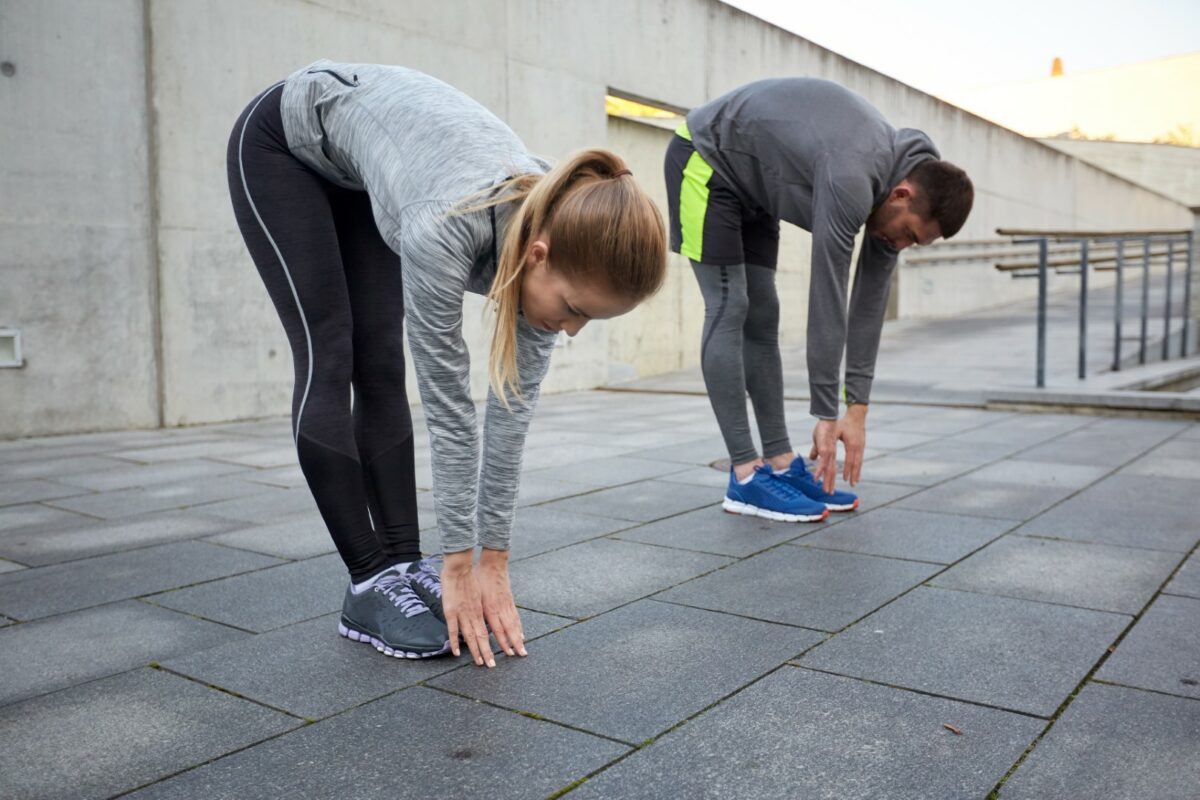
Stretching before exercise is more than just a pre-workout ritual; it is a critical component of a well-rounded fitness routine that can help prevent injuries and enhance your performance. You should also always check with a sports medicine doctor or your healthcare provider before starting a new fitness plan to ensure it is suitable for you.
Why Should I Stretch Before My Workout?
 The most important reasons for stretching include:
The most important reasons for stretching include:
Injury Prevention: When stretching before exercise, you may reduce the risk or severity of an injury. Properly stretching your muscles and joints helps prepare them for your workout, minimizing the chance of strains, sprains, and other exercise-related injuries.
Enhanced Flexibility: Stretching regularly can significantly improve your flexibility by allowing your joints to move through their full range of motion, reducing the strain on muscles and tendons during exercise. This not only aids in injury prevention but also enhances your athletic performance and comfort, as well as aiding in workout recovery and post-workout activity.
Mental Preparation: Stretching also serves as a mental run-through, transitioning your focus from downtime to high-energy activity.
Benefits of Stretching Before Exercise
Stretching creates physical changes in your body that help improve your workout, including:
Enhanced oxygen utilization: Stretching can ramp up your body’s oxygen use, especially during stamina-driven workouts. By boosting blood flow to your muscles, it gears up your body to meet the higher oxygen needs, possibly enhancing your VO2 max capacity, which is a prime measure of your cardiovascular endurance.
Increased lactic acid flow: If you are focusing on strength exercises, stretching acts as a muscle primer, enhancing circulation that aids in lactic acid production. This helps delay the onset of fatigue and muscle soreness, paving the way for a stronger and longer exercise session.
Increased neuromuscular activity: Especially with dynamic stretches, you are not just stretching but also waking up your muscles by lighting up the neuromuscular pathways. This results in a boost in muscle power and efficiency, which is essential for both high-intensity and endurance exercises.
Types of Stretching Techniques
There are various stretching techniques, each with its unique benefits, and knowing how long to do each stretch can make your workout much more effective.
Dynamic: Dynamic stretches consist of controlled, repetitive movements that mimic the activity you are about to perform. An example of a common dynamic stretch would be performing bodyweight “walking lunges” before you jog, bike, or do weighted leg exercises. Doing dynamic stretches for 5-10 minutes prior to your workouts can go a long way to improve the effectiveness and comfort of your routine.
Proprioceptive Neuromuscular Facilitation (PNF): PNF stretching combines stretching with contracting and relaxing muscle groups. It is often performed with a partner and can give you rapid gains in flexibility. A common PNF hamstring stretch involves lying on your back with one leg raised in the air. While contracting the hamstring and drawing the leg down to the ground, a partner applies gentle force in the opposite direction. PNF stretching typically involves a 3-5 second muscle contraction followed by a 10-20 second stretch, repeated 2-4 times.
Static: A great example of a static stretch is a floor-seated hamstring stretch, where you extend one leg out in front of you, bend your other leg so that your foot rests against the inside of your knee, and gently lean forward with a straight back, and hold. This is excellent for gradually increasing flexibility and preparing muscles for workouts. You should aim to hold a stretch position for 15-30 seconds and repeat 2-4 times.
Passive: With this stretch, you stay in one position for a set time. You are able to relax your body while a partner, accessory, or prop intensifies the stretch by putting external pressure on your body. You can also use the floor or a wall. One common passive stretch targets the hamstrings, where you touch your toes with straight legs. To maximize flexibility and stress release, passive stretches should be performed for 15-30 seconds and be repeated 2-4 times.
Customizing Your Stretches To Match Your Workout
Sports medicine experts recommend that your stretching routine be aligned with your workout agenda. If you are strength training, you might want to incorporate dynamic stretches that resemble the lifting actions you will perform, prepping your muscles for the upcoming strain. If you are doing cardio, opt for stretches that gradually increase your heart rate and warm your body, readying your cardiovascular system for the exertion to come. For mind-body workouts, like yoga, choose stretches that boost flexibility and concentration.
Stretching After You Exercise
Post-workout stretching is as important as stretching before exercising. Your post-exercise stretch should reflect the workout’s intensity. After high-intensity workouts, focus on elongating the primary muscle groups used with slow, static stretches to help gradually lower your heart rate. After strength training, aim for static stretches targeting the specific muscles engaged, to aid in lactic acid removal and support muscle recuperation. After an endurance workout, try stretches that relieve tension in the lower body to restore flexibility and diminish muscle tightness.
EmergeOrtho—Blue Ridge Region has orthopedic subspecialists focusing on each area of the body. If you have a sports-related injury or are training for specific sports, our board-certified sports medicine doctors and surgeons can help you heal quickly and safely, and get you back in the game as soon as possible.
Request an appointment here and Emerge Stronger. Healthier. Better.







